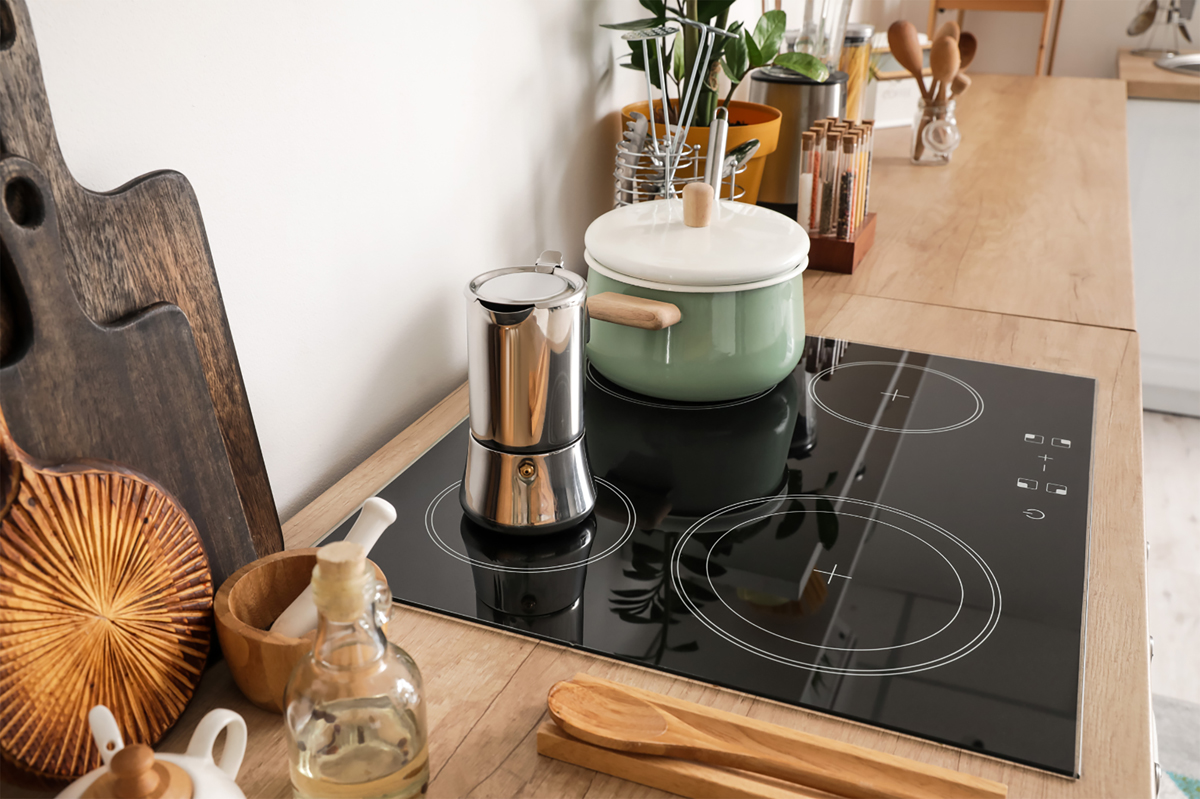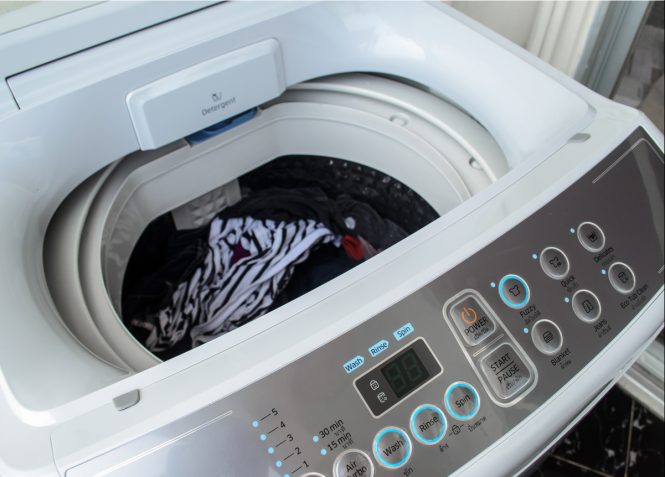Tools, Appliances & Gadgets: Smaller Ways to Go Renewable
By Alan Newman | Winter 2023 | Clean Power Guide
Not every step toward renewable energy demands a huge leap.
For example, nine years ago, as part of a kitchen remodel, we purchased an Electrolux induction stove. (These days all the major brands sell induction stoves.) We had wanted a convection oven, but also favored the high heat that gas burners provide. Our foodie daughter suggested an induction stove with the convection oven instead, listing various celebrity chefs that had adopted the technology. The induction stove top was initially a challenge. Now we wouldn’t ever change.
At the top setting, the ‘hottest burners’ on the stove heat liquids in record time or sear meat in my wok. (Like most stoves, I have two large high-heat locations and two smaller simmer spots.) Even better, the stove’s surface doesn’t get red hot—no burned-on carbon debris on the surface. In fact, our stove still looks almost new. Moreover, when you dial down, the heating instantaneously powers down. Settings are numbered: 5 for medium, 3 for simmer, and 10 or Pb (power boil) for insanely rapid heating.
Induction stoves are also energy efficient, measuring over 70 percent efficient compared to around 40 percent for gas, according to independent measurements.
Downsides: Induction stoves are still more expensive than standard electric or gas stoves. And only certain pots and pans, such as stainless steel or cast iron, work on these stoves. It is easy to check which cookware can be used; if a magnet sticks to the pot, it is good to go. On newer cookware, look for a looped, magnetic field icon on the bottom.
Nine years ago, it was impossible to find certain specialty cookware, such as a stove-top espresso maker or hot water canning pot, that worked on an induction stove. Today, we own both items.

Another step forward occurred just over a year ago, when our dryer’s drum went out of alignment, creating an awful racket. The dryer and washing machine were old when we bought the house in 2012 and had served their time. We chose a Miele stacking washer and dryer as a replacement, not fully appreciating that we now owned a heat pump dryer. Our old dryer heated the house in the winter (nice) and turned the place into a sauna in the summer (not nice). The new dryer is also a lot quieter and saves us money since heat pumps are incredibly efficient. You don’t need an expert to prove that; all that heat radiating from the old dryer was clearly lost energy.
I faced another challenge a few years back when my beloved, 20-year-old Stihl chainsaw acted up. I had previously owned a corded electric lawn mower from EGO. I liked the mower but hated finagling and sometimes running over the long extension cord.
I took a chance on an EGO battery-powered chain saw, not expecting it to be as powerful as the Stihl. In fact, the EGO has tackled all kinds of wood, including rock-hard black locust. While it still uses chain oil, I am glad to be rid of the oil-mixed gasoline and its heavy exhaust. The EGO is also radically quieter. So much so that I no longer wear ear protectors. My chain saw also doesn’t get blisteringly hot. I still always wear eye protection.
The chainsaw is wonderfully light if I snap in a 2.5-Ah battery (Ah stands for ampere hour, which correlates to how long a battery will last). However, that battery’s runtime is not as long as a tank full of gas. No problem—I purchased a second, heavier, and longer-running 5-Ah battery. I stick the depleted battery on the charger and swap in the fresh battery, and I am back in business. Charging is fast, so I can keep cutting wood until I run out of steam.
Again, the downside is the upfront costs: chainsaw, batteries, and battery charger. What makes sense is to evolve more of my outdoor tools to electric, which use the same batteries and charger. (I had learned my lesson with portable tools, owning three different brands with incompatible batteries.) Currently, I own an EGO battery-powered weed wacker and hedge trimmer. I am eyeing other EGO products, such as their snow blower, which has great reviews, as does their leaf blower. EGO battery sizes run up to 10 Ah; they are quite heavy but fine for a wheeled snow blower or lawn mower. Battery-powered outdoor tools are found in most hardware stores, some at discount prices.
You too can take small steps like these, in your own way.
Alan Newman is a member of the Marbletown Environmental Conservation Commission and an avid gardener.
